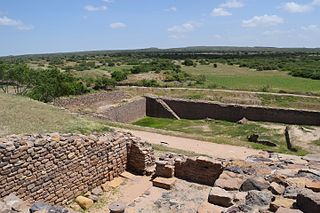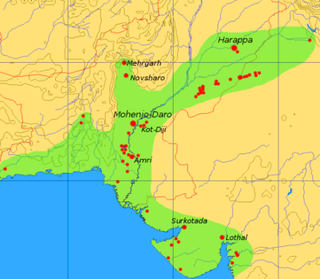Kuntasi | |
|---|---|
Archeological site | |
| Coordinates: 22°53′30.48″N70°35′58.56″E / 22.8918000°N 70.5996000°E | |
| State | Gujarat |
| Time zone | UTC+5.30 (Indian Standard Time) |
Kuntasi is an archaeological site (locally known as Bibi-no-Timbo) which is identified as a port belonging to the Indus Valley civilization. [1] This site is located on the right bank of Phulki River, about 2 km south-east of Kuntasi village [2] and 30 km from Morbi in Maliya taluka of Morbi District in Gujarat state of India. [3] It is five km inlandward from present shore line. It was first reported by P. P Pandya and later thoroughly explored by Y. M. Chitalwala. The excavations revealed two periods of occupation. Period I is assigned to the Mature Harappan phase (c. 2200–1900 BCE) and the Period II is assigned to the Late Harappan phase (c.1900–1700 BCE). [4] This site was identified as a jetty and a manufacturing centre. [5]






